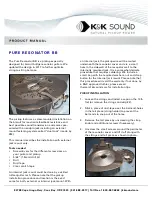
10-26
IM 755601-01E
10.2.13 RECall Group
The commands in the RECall Group deal with the recalling of the measured data.
These commands can be used to make the same settings and inquiries as when the RECALL DATA key on the front
panel is pressed.
:RECall
:
STAT e
<Space>
OFF
ON
<NRf>
?
RESult
?
<Space>
LIMit
COUNt
STATistics
DATA
:
ASCii
?
<Space>
<NRf>
,
<NRf>
BINar y
?
;
;
:RECall?
Function
Queries all settings related to the recalling of
the measure data.
Syntax
:RECall?
Example
:RECALL?
→
:RECALL:STATE 0
:RECall:DATA[:ASCii]?
Function
Queries the measured data that are stored in
ASCII format.
Syntax
:RECall:DATA[:ASCii]? {<NRf>, <NRf>}
(Parameters can be omitted)
<NRf>, <NRf> = 1 to 2000 (Specify the
<Recall start number (S)> then the
<Number of recalls (N)>)
Response
<Set 1>, <Set 2>, ... ,<Set N>
<Set 1> = “<Measurement information> and
<Measured data>” of the (S)th
data set.
<Set 2> = “<Measurement information> and
<Measured data>” of the (S+1)th
data set.
...
<Set N> = ”<Measurement information> and
<Measured data>” of the (S+N—1)th
data set.
• The contents of Set N are all in the
“<Measurement information>, <Measured
data>” form. This is the same form as the
response of the“
:READ?
” command. If the
measurement information is OFF,
<Measurement information> and “,”are not
output.
Example
:RECALL:DATA:ASCII?
→
3,0.02,3,
0.02,...,3,0.02
Description • If the parameters are omitted, all measured data
that are stored are output. In other words, the
output is the same as when the parameters are
set to {1, (the value equal to
:STORe:POINts?
)}.
• If the number of recalls specified by the
parameter is larger than the number of data that
are actually stored, “No data” is output for the
latter recalls containing no data.
• This query cannot be made in the measurement
mode. Doing so will result in an error (800).
10.2 Commands
















































